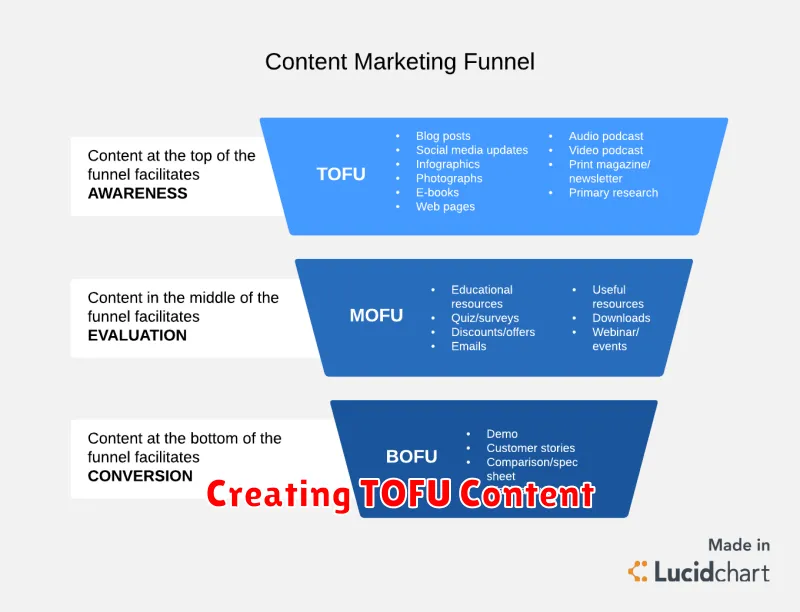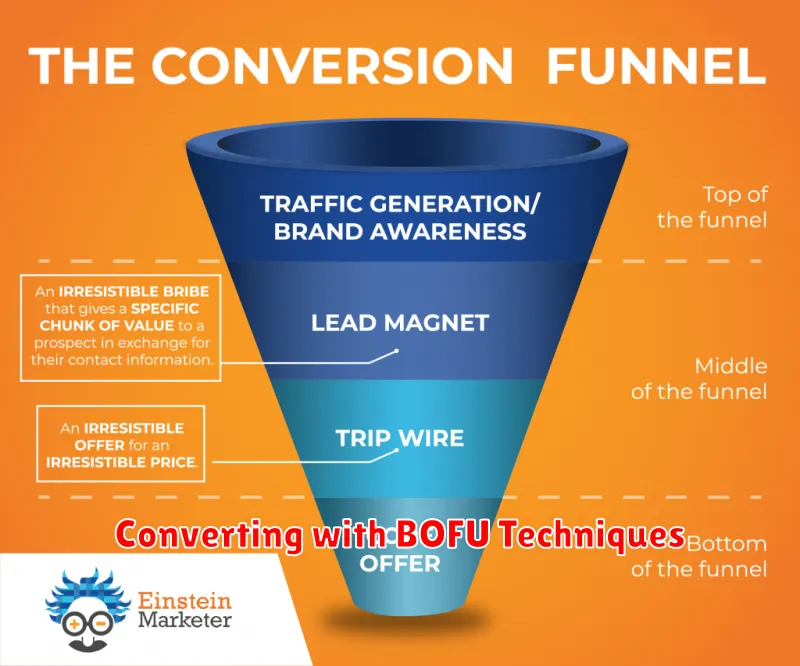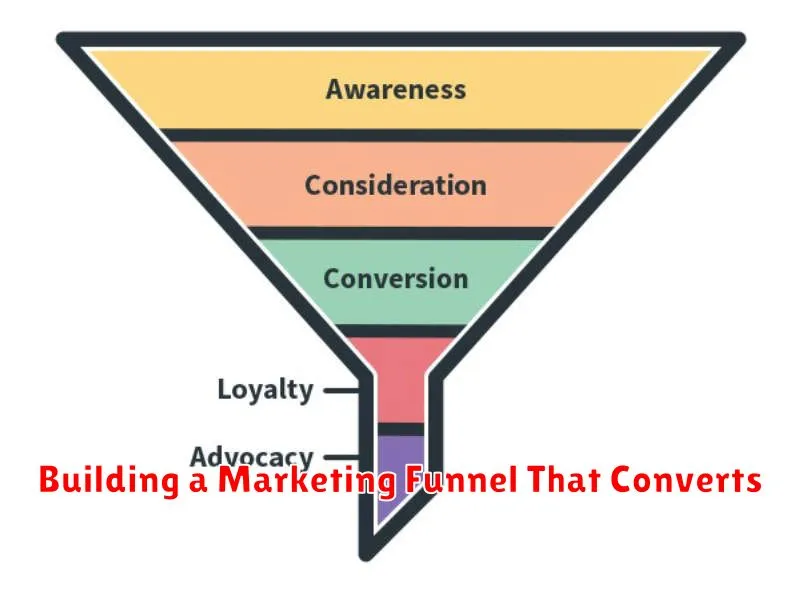In today’s competitive digital landscape, a marketing funnel that effectively converts leads into paying customers is essential for business success. This article will provide a comprehensive guide on building a marketing funnel designed for optimal conversion. We will explore the key stages of a successful marketing funnel, from attracting initial interest to nurturing leads and ultimately driving conversions. Whether you are a seasoned marketer or just starting, understanding the principles of a high-converting marketing funnel is crucial for maximizing your return on investment and achieving sustainable growth.
Learn how to strategically craft each stage of your marketing funnel to effectively engage your target audience and guide them towards a purchase. We’ll delve into practical strategies for optimizing your conversion rates at each step, covering topics such as lead magnets, targeted content, email marketing automation, and effective calls to action. By implementing the techniques outlined in this article, you can build a powerful marketing funnel that converts prospects into loyal customers, fueling your business growth and achieving your marketing objectives. Master the art of building a marketing funnel that converts and unlock the true potential of your marketing efforts.
Understanding the Marketing Funnel
The marketing funnel is a visual representation of the customer journey, from initial awareness of your brand to ultimately making a purchase. It’s a crucial concept for understanding how to effectively attract, engage, and convert potential customers.
Traditionally, the funnel is divided into several key stages. At the top, the Awareness stage represents the first point of contact. Potential customers become aware of your brand through various channels, such as social media or advertising.
Next is the Interest stage, where prospects demonstrate an interest in your products or services. They may visit your website, read reviews, or engage with your content.
The Decision stage is where potential customers actively evaluate their options and compare your offerings to competitors. Providing valuable information and addressing their concerns is key at this stage.
Finally, the Action stage is where the conversion happens. The customer makes a purchase, signs up for a newsletter, or takes another desired action.
By understanding the marketing funnel, you can tailor your marketing efforts to each stage and maximize your chances of converting leads into paying customers.
Stages of Customer Journey
The customer journey is a representation of the process a customer goes through when interacting with a business, from initial awareness to post-purchase behavior. Understanding these stages is crucial for building an effective marketing funnel.
Typically, the customer journey is divided into the following key stages:
1. Awareness
At this stage, the customer becomes aware of a problem or need they have. They may also become aware of your brand or product as a potential solution, but they are not yet actively considering a purchase. Content marketing plays a crucial role here.
2. Consideration
Once aware of their need and potential solutions, the customer begins actively researching and evaluating different options. They compare features, prices, and benefits. Providing detailed product information and customer testimonials is vital in this stage.
3. Decision/Purchase
This is the stage where the customer makes a purchasing decision. A smooth and efficient checkout process and various payment options can significantly impact conversion rates.
4. Retention/Advocacy
After purchase, the focus shifts to retaining the customer and fostering loyalty. Post-purchase engagement through email marketing, loyalty programs, and excellent customer service can turn satisfied customers into brand advocates.
Creating TOFU Content

Top-of-the-funnel (TOFU) content is designed to attract a broad audience and introduce them to your brand. It focuses on providing valuable information related to your industry and addressing common pain points potential customers might be experiencing.
The goal of TOFU content isn’t to sell, but to educate and build trust. By offering helpful resources, you position yourself as a knowledgeable authority and encourage prospects to engage further with your brand.
Examples of effective TOFU content include:
- Blog posts addressing industry trends
- Educational videos explaining key concepts
- Infographics presenting data in a visually appealing way
- Checklists and templates offering practical solutions
When creating TOFU content, keep it general and avoid overly promotional language. Focus on addressing the needs and interests of your target audience. This will help you attract the right people to your funnel and nurture them towards becoming qualified leads.
Nurturing Leads with MOFU

The Middle of the Funnel (MOFU) is where lead nurturing takes center stage. Prospects in this stage have identified a problem and are actively researching solutions. They’ve moved beyond initial awareness and are now evaluating different options, including your product or service.
Effective MOFU strategies focus on providing valuable content that helps leads make informed decisions. This could include case studies, webinars, product demos, or in-depth blog posts.
Key objectives in the MOFU include:
- Building trust and credibility
- Positioning your solution as the best fit
- Addressing potential objections
- Preparing leads for the sales process
By providing targeted content and engaging with leads in a meaningful way, businesses can effectively nurture them through the MOFU and closer to conversion.
Converting with BOFU Techniques

The Bottom of the Funnel (BOFU) is where the conversion happens. Prospects at this stage are aware of their problem, have researched solutions, and are now ready to make a purchase. BOFU marketing focuses on nudging these leads towards a final decision.
Key BOFU techniques include:
- Targeted offers: Presenting specific deals, discounts, or promotions can incentivize immediate action.
- Product demos and trials: Allowing potential customers to experience the product firsthand builds confidence and reduces purchase anxiety.
- Case studies and testimonials: Showcasing positive results from existing customers provides social proof and reinforces value.
- Limited-time offers: Creating a sense of urgency can encourage prospects to convert quickly.
By employing these strategies effectively, businesses can significantly improve their conversion rates and maximize their return on investment.
Measuring Funnel Effectiveness
Measuring the effectiveness of your marketing funnel is crucial for optimizing its performance and maximizing conversions. Key Performance Indicators (KPIs) provide quantifiable metrics to track progress and identify areas for improvement.
Several KPIs offer valuable insights into funnel effectiveness. Conversion rate, calculated by dividing the number of conversions by the number of visitors, reveals the percentage of users moving through each stage. Tracking conversion rates at each stage helps pinpoint bottlenecks.
Cost per acquisition (CPA) is another vital metric, representing the average cost to acquire a new customer. Calculating CPA involves dividing the total marketing spend by the number of conversions. Lowering CPA while maintaining conversion rates is a primary goal.
Analyzing time spent in each stage can highlight friction points. If users spend an excessive amount of time in a particular stage, it might indicate a usability issue or a need for clearer messaging.

